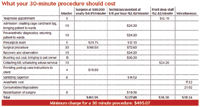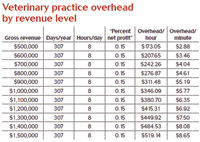The end is near if things don't change in the veterinary profession
Look at the numbers and save yourself-your veterinary practice too.
Just as the dodo disappeared from the face of the Earth, so shall the veterinarian. When archaeological scientists delve deeply into the disappearance of the veterinarian, they will eventually discover that its culture was based on the worship of the spay. In fact, the entire measure of a veterinarian's worth was based on the number of spays he or she accumulated.
To garner more spays, the veterinarian made the procedure so economically affordable that the world's population flocked to the clinic's door. Eventually, the spay replaced the dollar as the unit of currency among veterinarians. A fractured femur was worth five spay units and a hip replacement was worth 12 spay units.
Economic archaeologists will discover the veterinarian devalued this spay currency by discounting further and further with every new veterinarian that encroached on his or her territory. While overhead costs remained the same, the more and more heavily discounted spay was used as the basic measure by which all other procedures were measured and, as a result, the practice of veterinary medicine became more and more economically depraved. Established practices became unsellable and new graduates found themselves carrying a debt load to nowhere.

What your 30-minute procedure should cost
If only veterinarians today had an objective study on the cost of producing a single spay unit in terms of dollars to show them that current fees are certain to direct a practice into bankruptcy—or, even worse, working for no compensation at all. Armed with such a study, veterinarians might survive after all.
If you charge half your true cost for a spay procedure as a donation to the community that supports you, that is noble. If, as is true in the minds of many practitioners, a cystotomy is twice the difficulty of an ovariohysterectomy and you charge just twice the already discounted spay fee, that's absurd (see chart, above, for what a 30-minute procedure should cost). You are continuing to support the community at the expense of not only your profit but also your overhead.

Veterinary practice overhead by revenue level
Do you even know your total hourly overhead? I define overhead as the total cost to run your practice, including appropriate salaries. What's left over is profit to the practice. Let's make it simple. In a moderately well-managed hospital, your hourly overhead is 85 percent of your gross income divided by 2,456 (based on 307 eight-hour days worked per year). For example, if your gross revenue is $500,000, your overhead per hour is $173.05 (see chart labeled "Veterinary practice overhead by revenue level").
This calculation is based on practices with 15 percent net profit. But according to industry analytics, more than half of all veterinary practices never achieve that much profit. So, if the spay is like veterinary currency, let's look at your spay units. Take half the hourly overhead for your level of revenue and compare your ovariohysterectomy fees to that standard to see if you're headed the way of the dodo.
Now, cut this article out, frame it behind glass and hang it where you must pay attention to it regularly. Usually that's somewhere in your bathroom at about 38 inches above the floor. Just remember: Forewarned is forearmed, but extinct is forever.
Dr. Gerald Snyder publishes Veterinary Productivity, a newsletter for practice productivity. He can be reached at 415 Newark St., Hoboken NJ 07030; (800) 292-7995; or vethelp2@optimum.net.